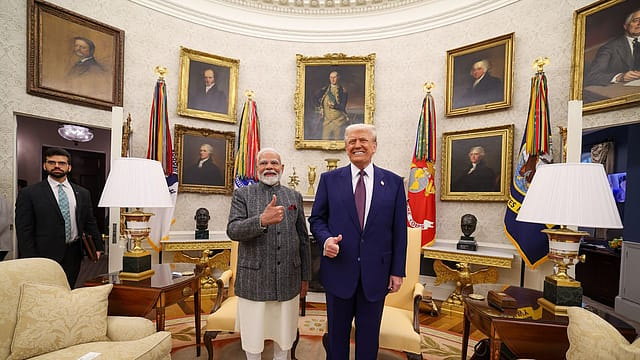Trump slaps 27% duty on imports from India, pharma exports spared
ADVERTISEMENT

United States President Donald Trump has announced a 27% tariff on goods imported from India to the US from April 9. The US currently has a 17% simple average most-favoured-nation (MFN) tariff rate for goods imported from India. The additional tariff, termed as USA’s “discounted reciprocal tariff” will remain in effect until such a time as Trump determines that the threat posed by the trade deficit and underlying non-reciprocal treatment is satisfied, resolved, or mitigated, said a White House statement. Pharmaceutical products, one of India’s key export items to the US, have been kept out of the new reciprocal tariff rule.
Trump alleges that trade barriers (both tariff and non-tariff barriers) and currency manipulation together result in India levying an effective tariff of 52% on US goods, and hence the announcement of a ‘discounted reciprocal tariff’.
He also said that India imposes their own uniquely burdensome and/or duplicative testing and certification requirements in sectors such as chemicals, telecom products, and medical devices that make it difficult or costly for American companies to sell their products in India. If these barriers were removed U.S. exports would increase by at least $5.3 billion annually, he claims. The new tariff rate will thus form the basis of the India-US Bilateral Trade Agreement (BTA) negotiations expected to begin soon.
On high tariff rates imposed by India, Trump said India charges 70% duty on imported passenger vehicles as against 2.5% by the US. India charges 80% import duty on rice with husk, while US imposes 2.7%, and India levies 50% duty on American apples as against 0% duty by the US.
December 2025
The annual Fortune 500 India list, the definitive compendium of corporate performance, is out. This year, the cumulative revenue of the Fortune 500 India companies has breached $2 trillion for the first time. Plus, find out which are the Best B-schools in India.
While the impact of individual goods export from India to the US is not yet clear, the overall impact is likely to be less than anticipated as US has announced similar tariff hike on all key trading partners. For instance, the impact on India’s garment exports when a major garment exporting nation like Bangladesh now attracts 37% duty on imports needs to be seen.
Chinese exports to the US will now attract a tariff on 34% while that from European Union and Vietnam will attract 20% and 46% tariff respectively. The other top countries against which Trump has announced fresh tariffs include Taiwan (32%), Japan (24%), South Korea (25%), Thailand (36%), Switzerland (31%) and Indonesia (32%).
For countries that were competing with each other for a bigger share in the US market, the tariff hikes could see them becoming more competitive in goods (due to the higher tariff on the same goods from competing country) and losing out on some other for the same logic.
Trump has also listed out a large number of US MNCs that are interested in big investments in that country in the coming years. If the size and scope of such investments result in proportionate reduction in investments elsewhere, some countries and sectors could see lesser foreign direct investments at least in the medium term.
